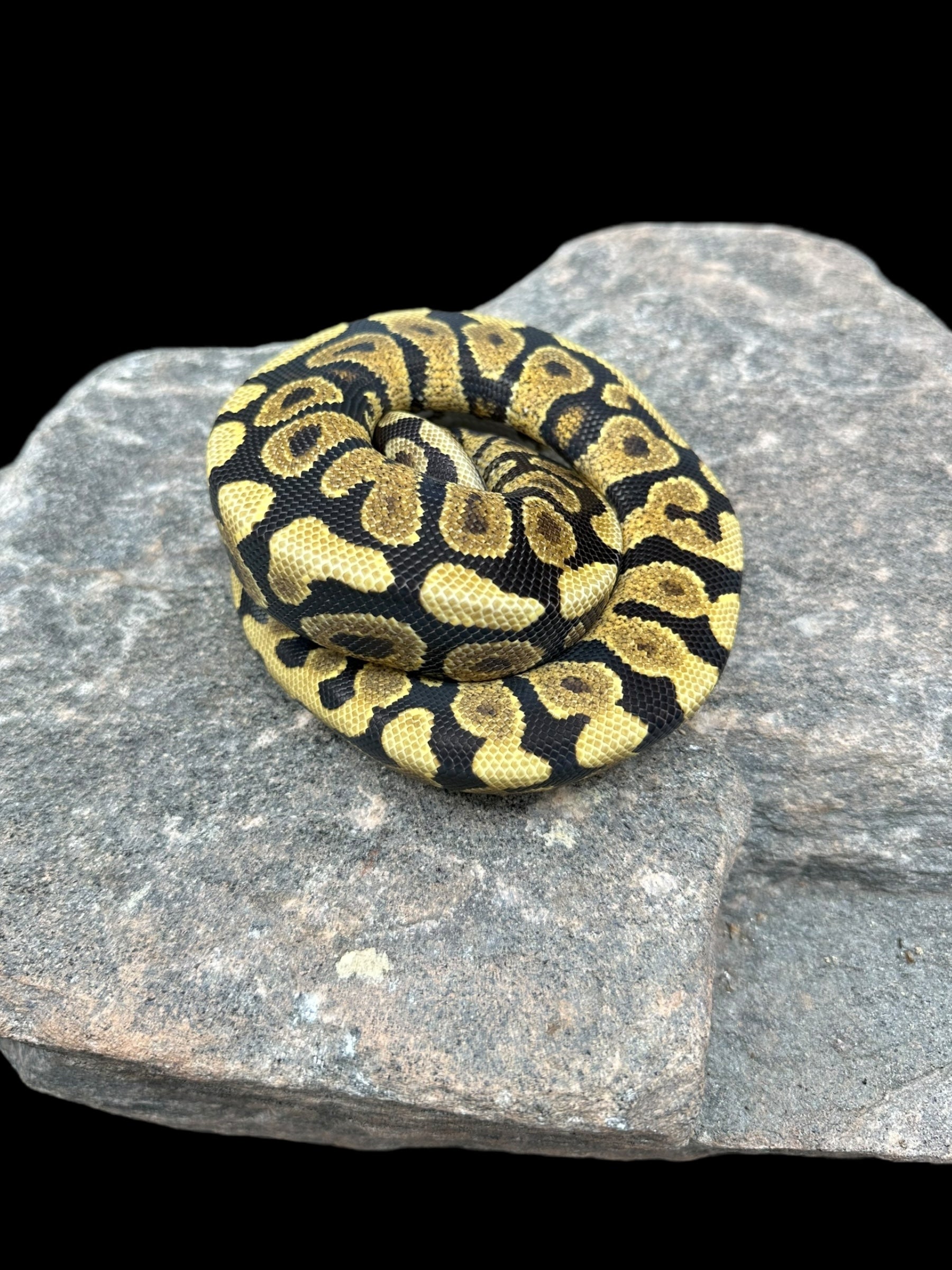Photo Disclaimer
Description
Ball Python (Spotnose Yellowbelly Het Clown)
Python regius
Common Names: Ball Python, Royal Python
(Spotnose & Yellowbelly = co-dominant morphs, Clown = recessive morph, het form carried)
Species Overview
-
Size: Adults typically grow 3–5 feet (0.9–1.5 m), with females often bulkier and sometimes approaching 6 feet.
-
Appearance:
-
Spotnose (co-dominant – visual): Produces cleaner, more intricate patterning with a distinctive light spot on the nose and increased head patterning. Also tends to reduce side speckling.
-
Yellowbelly (co-dominant – visual): Adds brighter golden tones, higher contrast, and distinctive belly checkering. When combined with other morphs, it can create highways/freeways and enhance colour intensity.
-
Clown (recessive – het form): Carried here as one copy. When visual, Clown morphs feature a reduced pattern with a bold dorsal stripe and distinctive head stamp.
-
Combined, the Spotnose Yellowbelly Het Clown is a visually appealing patterned morph with strong colour enhancement, and in breeding projects can produce Spotnose Clowns, Yellowbelly Clowns, or even the sought-after Spotnose Yellowbelly Clown combos.
-
-
Distribution: Wild-type ball pythons are native to West and Central Africa, thriving in savannahs, farmland, and lightly wooded habitats.
-
Habitat: Primarily terrestrial and burrow-dwelling, spending most of their time in rodent tunnels or other sheltered areas.
-
Behaviour: A nocturnal ambush predator, feeding on small mammals and birds.
Captive Care
-
Enclosure: Adults thrive in a 40-gallon breeder (36” × 18” × 18”) or equivalent. Provide secure hides on both the warm and cool sides, climbing décor, and a water bowl large enough for soaking.
-
Temperature & Humidity: Maintain daytime temps of 78–82°F (25–28°C) with a basking spot at 88–92°F (31–33°C). Night temps can dip to 72–75°F (22–24°C). Humidity should remain at 50–60%, with a slight boost during shedding.
-
Diet: Juveniles eat hopper mice or rat pups every 5–7 days; adults generally thrive on medium rats every 10–14 days. Prey should match the snake’s girth.
-
Behaviour in Captivity: Spotnose Yellowbelly Het Clowns are docile, hardy, and easy to manage, sharing the calm temperament ball pythons are known for.
-
Special Considerations: While genetics affect colour and pattern, husbandry requirements remain the same across all ball python morphs.
Genetics Note
-
Spotnose (Co-Dominant – Visual): Creates a distinct head stamp, lighter nose spot, and more intricate patterning. Two copies (Super Spotnose) produce very strong pattern changes and are used in complex clown projects.
-
Yellowbelly (Co-Dominant – Visual): Brightens overall appearance, increases contrast, and adds unique belly checkering. Key in Freeway/Highway projects.
-
Clown (Recessive – Het Form): Carried as one copy. When visual, produces a reduced pattern with bold dorsal striping and a signature head design.
The Spotnose Yellowbelly Het Clown is a genetically valuable project morph, highly sought after for its potential to produce visually spectacular Clown combos, especially with Spotnose’s strong influence on pattern and Yellowbelly’s colour enhancement.

